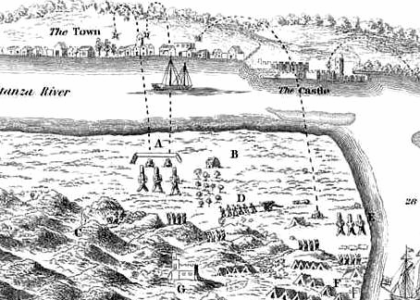Welcome to Fort Loudoun, a remarkable site rich with history and stories of resilience. Situated in the lush landscape of present-day Tennessee, Fort Loudoun was established in 1756, during the tumultuous era of the French and Indian War. This fort was one of the first British outposts west of the Appalachian Mountains. It was built with the intent to ally with the Cherokee people and counteract French influence in the region. Imagine the flurry of activity here as British soldiers and Cherokee warriors forged alliances, negotiated treaties, and prepared for the uncertainties of frontier life.
The fort’s construction was a direct response to the geopolitical tensions of the time. As European powers vied for control of North American territories, Fort Loudoun emerged as a strategic foothold. The fortification was named after John Campbell, the fourth Earl of Loudoun and commander of British forces in North America. His leadership, although far from the site, symbolized the British commitment to securing their interests in the New World.
Life at Fort Loudoun was far from easy. The soldiers and settlers faced challenges such as harsh weather, supply shortages, and the constant threat of conflict. Despite these adversities, the fort became a hub of cultural exchange and diplomacy. Cherokee leaders like Attakullakulla, also known as Little Carpenter, played pivotal roles in maintaining peace and cooperation with the British. His efforts were instrumental in the initial success of the fort as a center for trade and military strategy.
However, the peace was short-lived. By 1760, tensions between the Cherokee and British escalated due to broken promises and resource struggles. This culminated in the Cherokee siege of Fort Loudoun. After a grueling blockade, the British garrison was forced to surrender. Tragically, as they evacuated, several soldiers and settlers were ambushed, marking a somber chapter in the fort’s history.
Over the years, Fort Loudoun fell into disrepair and was eventually abandoned. Yet, its legacy endures. Archaeological efforts have unearthed artifacts that offer glimpses into the daily lives of those who lived and worked here. Today, Fort Loudoun stands as a testament to the complex tapestry of alliances and conflicts that shaped early American history. Visitors can explore the reconstructed fort, engage with living history demonstrations, and reflect on the enduring impact of these historical events.
The story of Fort Loudoun is not just one of military strategy, but also of cultural intersection and adaptation. It reminds us of the dynamic relationships between the indigenous peoples and European settlers, and the challenges of navigating a rapidly changing world. As you stand here, imagine the echoes of the past, the voices of those who once sought to shape the destiny of a nation.






